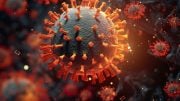
Brigham researchers have discovered that a reduction in the INPP5D gene in microglia leads to increased neuroinflammation, potentially contributing to the progression of Alzheimer’s disease, paving the way for targeted treatments.
A research study conducted by Brigham researchers has uncovered the way in which genetic alterations in specific brain cell types may play a role in the inflammation observed in Alzheimer’s disease.
Microglia, immune-regulating cells in the brain, are known to be involved in the development of Alzheimer’s disease (AD). Researchers from Brigham and Women’s Hospital, a founding member of the Mass General Brigham healthcare system, have conducted a study examining how genetic factors in microglia contribute to neuroinflammation, and, in turn, AD.
The research team discovered that lowering the levels of the INPP5D gene, present in microglial cells, leads to neuroinflammation and a heightened risk of Alzheimer’s Disease (AD). The findings, which have important implications for developing microglia-focused treatments for Alzheimer’s and similar conditions, have recently been published in the journal Nature Communications.
The Role of Microglia in Brain Health
“We know that microglia play important roles in the healthy and diseased brain, but, in many cases, the molecular mechanisms underlying this relationship are poorly understood,” said corresponding author Tracy Young-Pearse, PhD, from the Department of Neurology at Brigham and Women’s Hospital. “If we’re able to identify and understand the significance of specific genes that play a role in neuroinflammation, we can more readily develop effective, targeted therapeutics.”
Neuroinflammation is important to monitor in people with neurodegenerative diseases, but it can be difficult to detect, especially in the early stages of AD. The earlier neurologists can identify it, the earlier they can treat it. Microglia are clearly involved in the process of neuroinflammation, but there are many unanswered questions regarding the molecular pathways involved.
In-depth Analysis of INPP5D and Inflammation
The team used a variety of experimental approaches to probe the relationship between levels of INPP5D and a specific type of brain inflammation, activation of the inflammasome. As part of their study, the team compared human brain tissue from patients with AD and a control group. They found lower levels of INPP5D in the tissues of patients with AD and when INPP5D was reduced, it activated inflammation. In parallel, they used living human brain cells derived from stem cells to study the intricate molecular interactions within microglia that mediate inflammatory processes with a reduction of INPP5D. These studies identified specific proteins that could be inhibited to block inflammasome activation in microglia.
Although the team’s work represents the most comprehensive analysis of INPP5D in the AD brain, it remains to be determined whether INPP5D should be targeted with therapeutics. The team notes that their findings suggest INPP5D activity in AD brains is complex and future studies are needed to understand if INPP5D can be targeted to prevent cognitive decline in patients with AD.
“Our results highlight an exciting promise for INPP5D, but some questions still remain,” said Young-Pearse. “Future studies examining the interaction between INPP5D activity and inflammasome regulation are essential to improve our understanding of microglia in AD and to help develop a comprehensive toolbox of therapeutics that can be deployed to treat each of the molecular roads that lead to AD.”
Reference: “INPP5D regulates inflammasome activation in human microglia” by Vicky Chou, Richard V. Pearse II, Aimee J. Aylward, Nancy Ashour, Mariko Taga, Gizem Terzioglu, Masashi Fujita, Seeley B. Fancher, Alina Sigalov, Courtney R. Benoit, Hyo Lee, Matti Lam, Nicholas T. Seyfried, David A. Bennett, Philip L. De Jager, Vilas Menon and Tracy L. Young-Pearse, 29 November 2023, Nature Communications.
DOI: 10.1038/s41467-023-42819-w
This work was supported by NIH grants P01AG015379, RF1NS117446, R01AG055909, U01AG072572 and U01AG061356.









Perhaps statistics should be considered proof of “cause and effect” after all. “Experience,” as opposed to “evidence” based, I’ve been writing for years about correlation’s between very, very mild food (minimally) allergy reactions (e.g., Dr. Arthur F. Coca, by 1935), the 1980 US FDA approval of the expanded use of cultured “free” (unlike natural “protein-bound” can cross the blood brain barrier) monosodium glutamate (MSG, minimally), related inflammation in general and mind altering brain damage in particular (e.g., AD, dementia, depression, mass shootings and suicides, minimally). The old adage, ‘can’t see the forest for the trees,’ seems to me to apply here. Not the researcher’s or SciTechDaily’s fault, it’s just that mainstream medicine is still so ‘dark ages’ (e.g., allergy, FDA approved food poisoning and excessive resultant medical errors ignorant and incompetent).